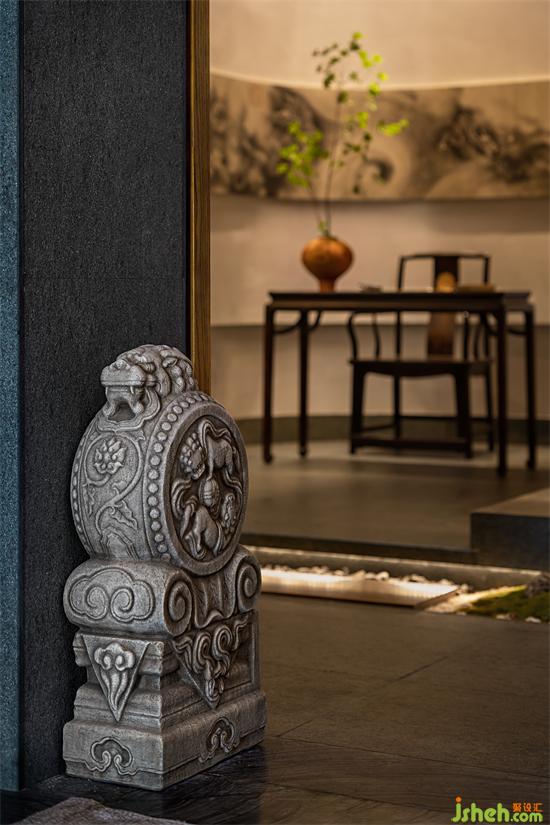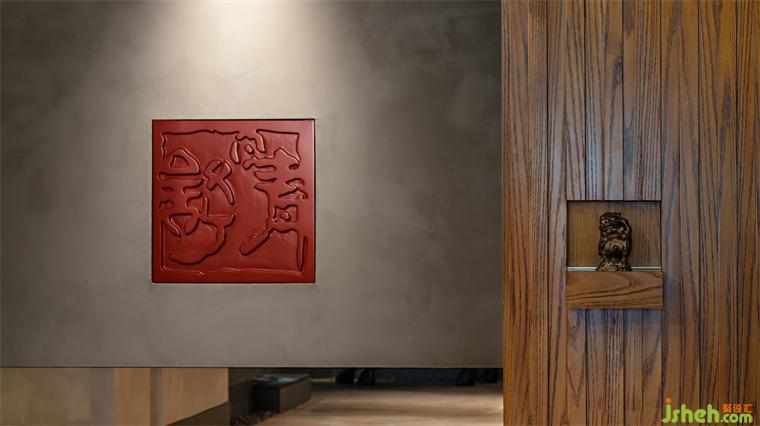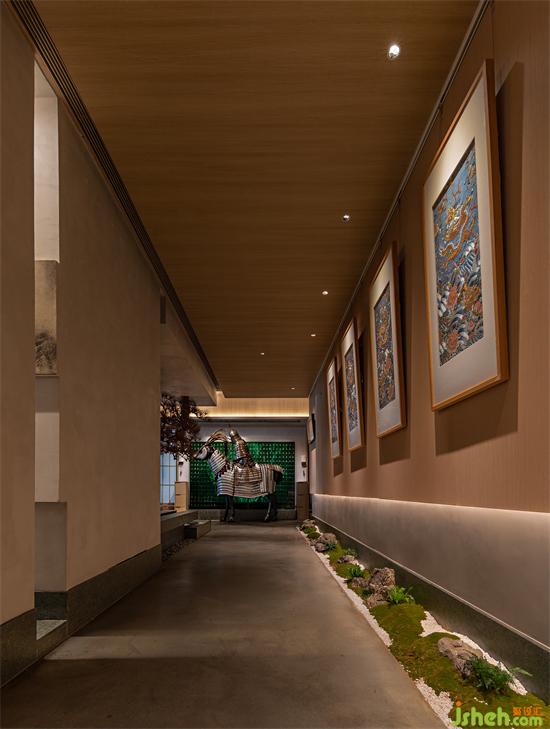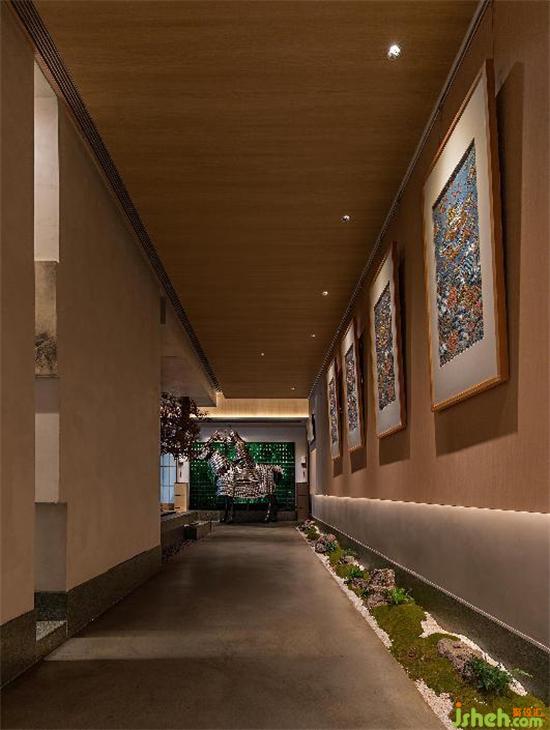项目名称:深圳晴舒·料理设计
Project Name: Shenzhen Qingshu Japanese Cuisine
项目地址:深圳福田区皇岗商务中心二号楼皇庭V酒店53层
Location: Futian District, Shenzhen, China
设计单位:广东极度空间酒店设计有限公司
Design Company: JDKJ Design
主案设计师:林永锋
Chief Designer: Yongfeng Lin
辅助设计师:钟克仁,黄建瑜,李捷,黄丹凤,袁晓盈
Assistant Designer: Keren Zhong, Jianyu Huang, Jie Li, Danfeng Huang, Xiaoying Yuan
项目面积:421平方米
Area: 421 square meters
项目造价:498万
Cost: RMB 4.98 million
设计开始日期:2022年3月
Design Time: March, 2022
完工时间:2022年7月
Completion Time: July, 2022
主要材料:微水泥,天然麻石,实木方料,PU木饰面,樟子纸,亚克力彩绘
Main Materials: micro cement, savageness granite, solid wood, PU wood veneer, camphor paper, acrylic paint
业主名称:深圳晴舒餐饮文化管理有限公司
Client Name: Shenzhen Qingshu Catering Culture Management Co., Ltd
项目摄影:彦铭视觉艺术(深圳)工作室
Photographer: Yanming Photo

“柳下一瓢酒,湖风散积阴。晴舒生物命,春酌化工心”。远溯至唐宋时期,禅宗文化由中国传入日本,自此渗透到日本茶道、饮食等各个方面。日式料理受禅道影响,尊重食材本味,深圳晴舒料理设计以匠心巧技表达自然、具现自然。
“The lake breeze was spread throughout. With a glass of wine, biological life has the capacity to soothe our hearts.”The Tang and Song dynasties brought Chinese Zen culture to Japan, and it has since penetrated every aspect of Japanese tea ceremony and food. The Zen-influenced Japanese cuisine respects the true flavor of food while artistically and deftly interpreting nature.

“晴”为食材饱含阳光的自然质感,“舒”为叹服于匠人技艺的惬意心境。以“晴舒”二字为主导,坐落于深圳福田区皇岗商务中心皇庭V酒店53层的晴舒料理项目,正是以空间美学为现代融合料理文化造境,为食客构筑一方与自然交流、与禅意通感的灵动空间。
“Qing”denotes the raw, sunlight-filled texture of the components, and“Shu”denotes the relaxed atmosphere of enjoying the artistry. Led by the name“Qingshu,”the Qingshu Cuisine project, which is situated on the 53rd floor of the V Hotel in the Futian District of Shenzhen’s Huanggang Business Center, aims to construct a smart area where diners can interact with nature and experience a sense of Zen.


餐厅入口设计采用隐玄妙手法,通过机关开启门扉,翩然入目的即是以印章形式展现的“晴舒”二字,深圳晴舒料理设计师从篆刻艺术入手,在中国古典艺术与日式民族文化中找到共通之处,将之升华为含蓄委婉的东方写意之美,自细节处将澄明禅意洇染开来。
The restaurant’s entrance is designed in a covert and enigmatic manner, with the goal of displaying the two words“Qingshu”in the shape of a seal by using an organ to open the door and waltz inside. Starting with the craft of seal cutting, the designer discovers a common ground between Japanese and Chinese national cultures, euphemistically transforming it into the implicit beauty of Oriental freehand, and dying the transparent Zen since the details.



穿行于松枝竹影间,沿途的砂石敷沙与青石苍苔错落分布,深圳晴舒料理设计构成一幅枯山水庭院的空阔景致。木质墙面如泛黄的唐纸,光线穿过松枝漫射四内,在南宋画家陈容的长卷《九龙图》上留下浓淡有致的阴翳。更胜于浮世绘的刻板,《九龙图》的“云蒸雨飞、天垂海立”恢弘气势延伸了空间的内涵与向度,引发历史与精神的共鸣。
The courtyard’s dry terrain is made up of sand and bluestones that are distributed among the shadows cast by bamboo and pine trees. The Southern Song Dynasty painter Chen Rong’s lengthy book Kowloon Map is illuminated by light that filters through the pine branches and casts a beautiful hue on the wooden walls that resemble paper made in Tang dynasty. The majestic movement of“steaming clouds, flying rain, descending sky, and broad sea”in Kowloon Map transcends the intention and expands the connotation and depth of space, thus evoking historical and spiritual resonance.



不止于空庭独酌的风雅,把杯欢歌的疏狂亦是设计师想要赋予空间的属性。深圳晴舒料理设计师在餐厅中加入“铁浮屠、时光宝铠”等元素,兵器、甲胄等意象的融入,中和了和式风格千篇一律的内敛与缄默,塑造出骑兵凯旋、同饮共庆的场景感,将干云豪气糅合于空间气质之中。